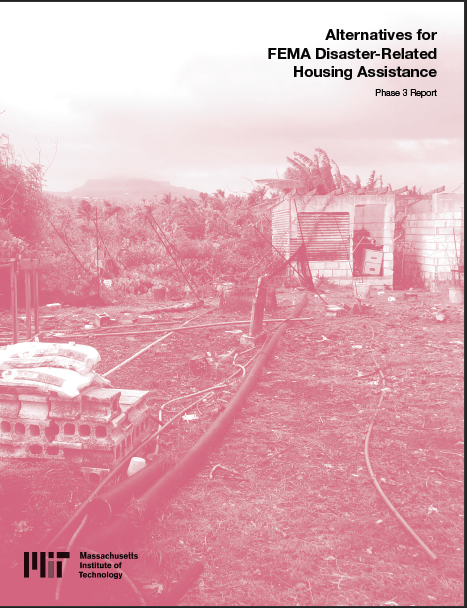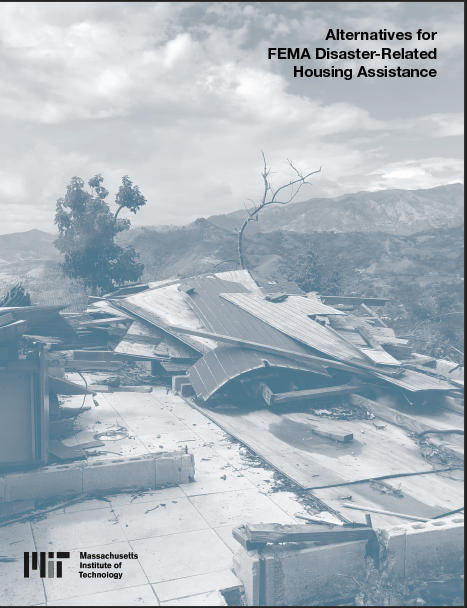Alternatives for FEMA Disaster-Related Housing Assistance
Project Reports
Research Team
Contact Us
In the spring of 2017, Acting Federal Emergency Management Agency (FEMA) Administrator Robert Fenton acted on a recommendation from a national Housing Summit, initiating a partnership with the Massachusetts Institute of Technology (MIT) to undertake an in-depth analysis of FEMA’s Housing Assistance system. MIT’s Center for Transportation and Logistics was among a consortium of research laboratories assembled to address the complexity of the housing problem by identifying novel solutions for survivor-centric and cost-effective post-disaster housing.

Real-time monitoring of a housing mission requires situational awareness of the activities of FEMA staff and partners across dozens of counties, parishes, townships, and cities. Through a comprehensive analysis of the speed and success of FEMA’s large-scale housing missions for eight major disasters, MIT identified information gaps, data quality issues, and opportunities to improve processes for more successful housing missions. MIT took a housing-as-a-service view, rather than a housing-as-a-program view. By looking across all of FEMA’s sheltering, housing, and protective measures programs, MIT was able to develop a holistic view of multi-actor housing efforts for major hurricanes, wildfires, and floods. Layering on financial cost information across FEMA, SBA, and NFIP programs, as well as HUD’s CDBG-DR and private insurance programs, allowed the MIT team to develop the first holistic market-wide look at residential construction and rebuilding in post-disaster settings.
In June 2018, MIT brought together state regulators, homebuilders, trade associations, home manufacturers, experts in the residential construction space, and FEMA subject matter experts to begin to determine the capacity for factory-built homes as well as local labor for installation. An MIT assessment of housing construction capacity has identified limitations – including those outside FEMA’s control – which drive the demand for and success of FEMA’s housing missions, as well as survivor-driven home repairs.
Accomplishing this research project is leveraging CTL’s market analysis, data aggregation, stakeholder analysis, and financial flow tracking expertise areas.
Project Reports
Systems Built Housing Report
Research Team

Jarrod Goentzel
Founder and Director

Michael Windel
Research Associate
Contact Us
If you are interested in learning more, please reach out to our team at humanitarian@mit.edu



